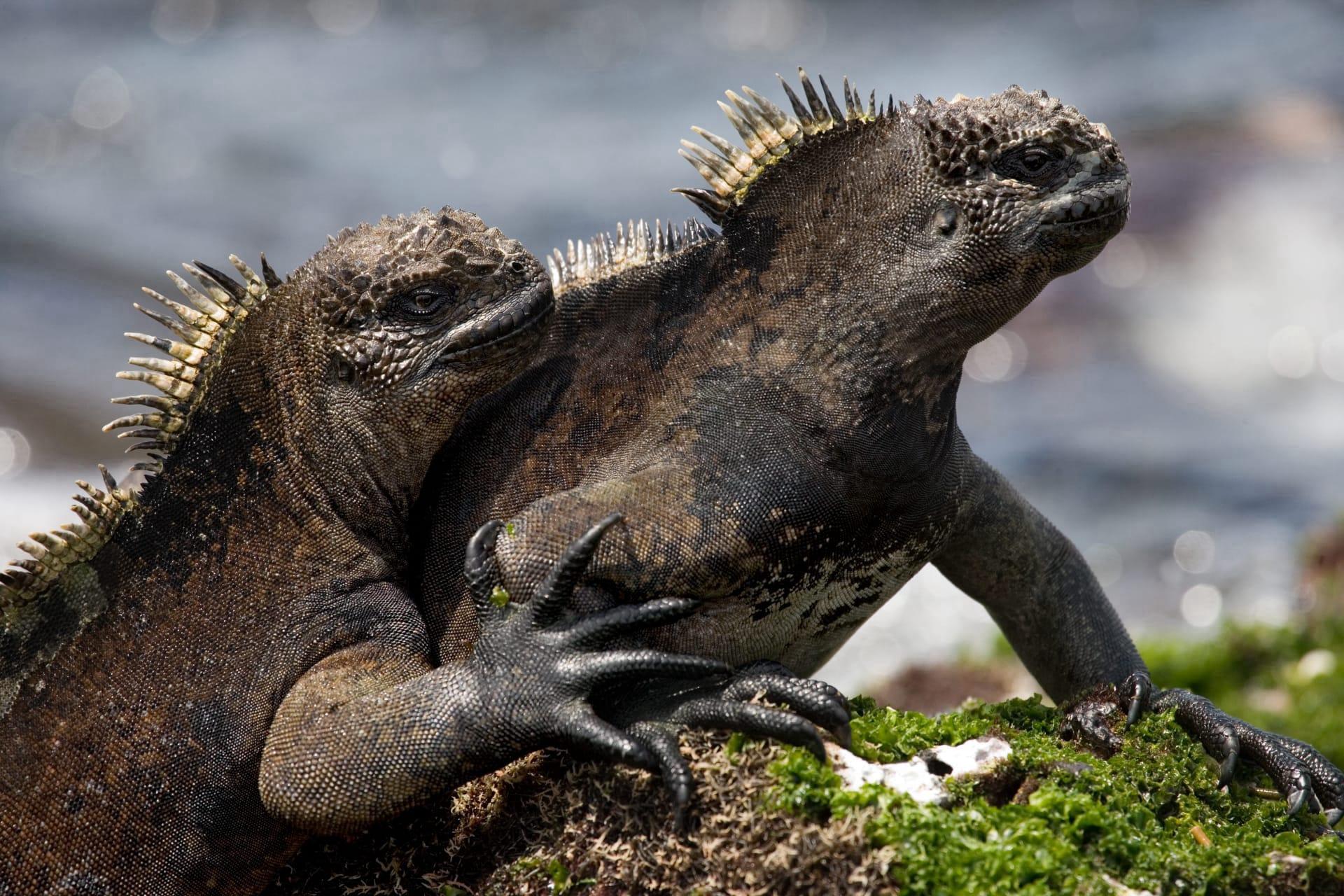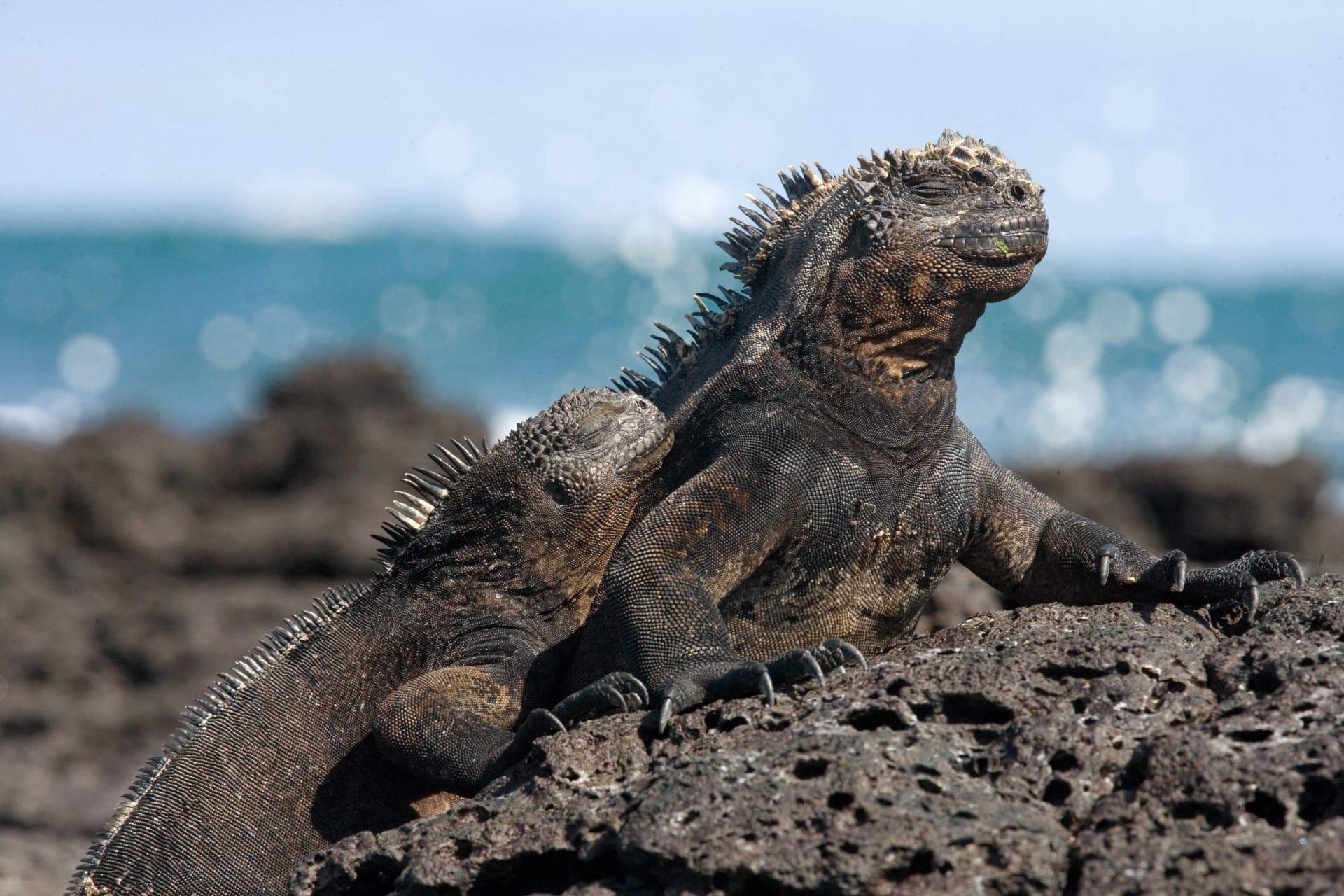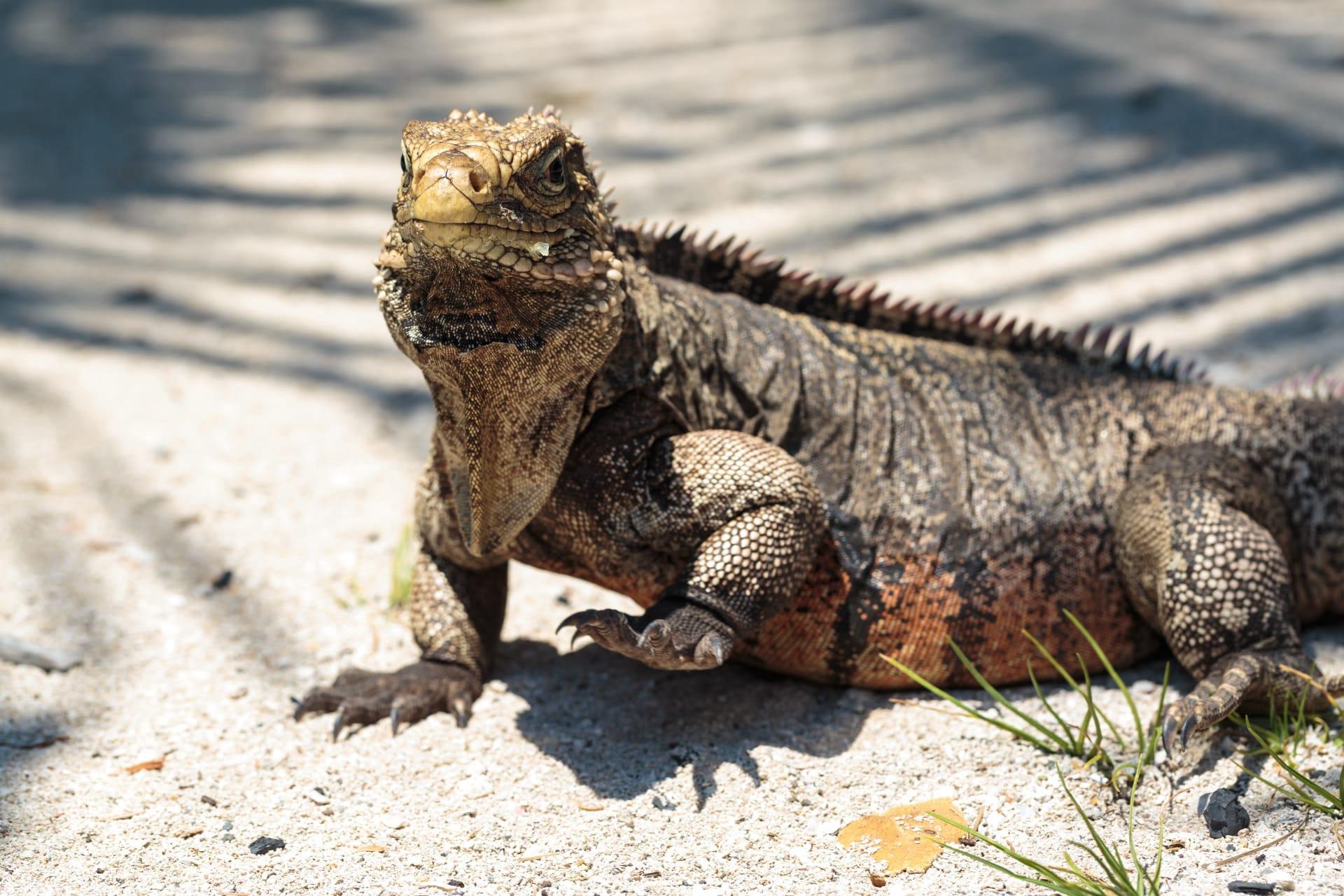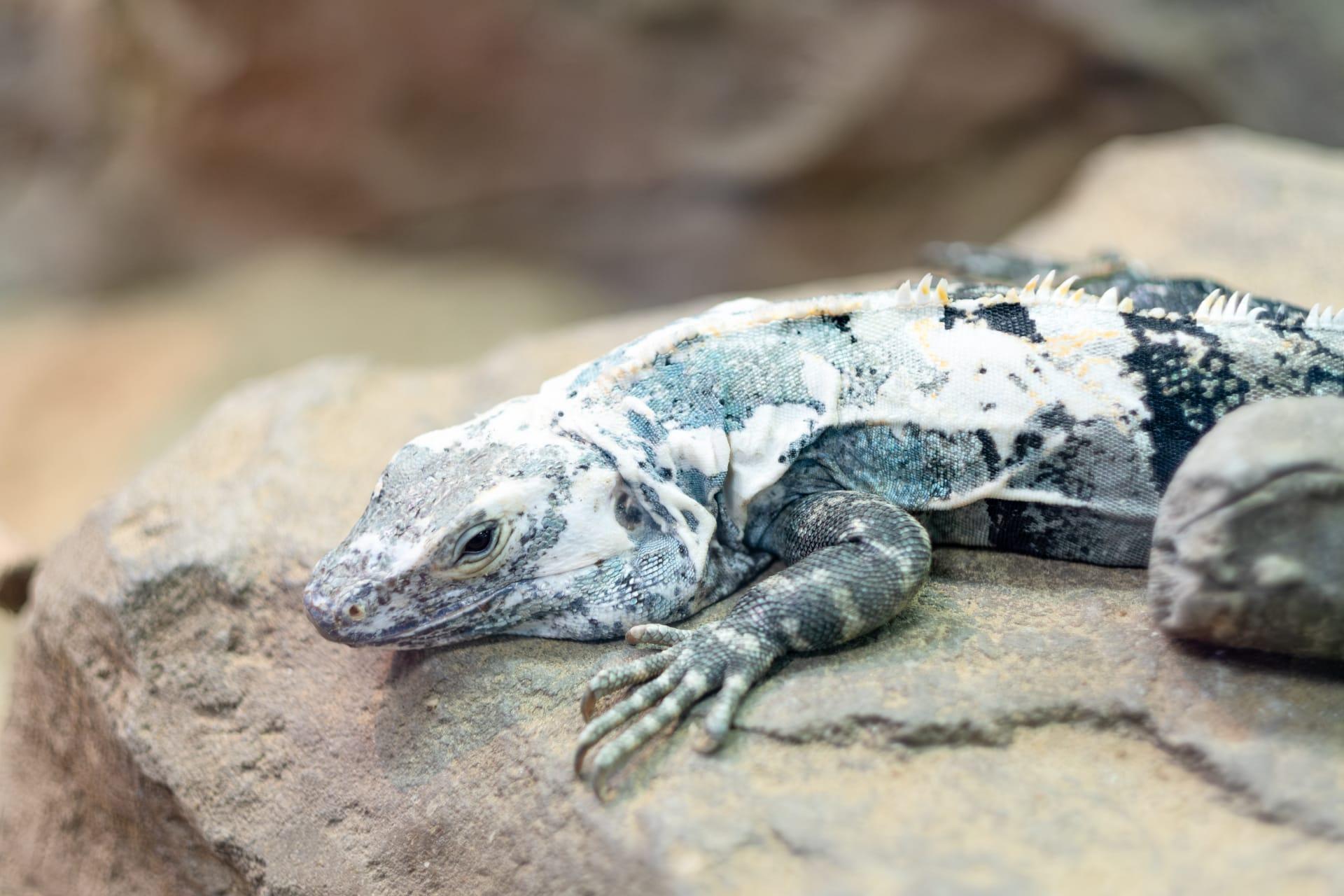Marine Iguana Characteristics
- Home /
- Mini Encyclopedia /
- Animal /
- Marine Iguana Characteristics
1
The Marine Iguana, unique to the Galapagos Islands, is a fascinating creature. These iguanas typically weigh around 1 to 12 kilograms, with males generally larger than females. They can grow up to 1.3 meters long, with their size varying greatly across different islands. Remarkably, Marine Iguanas can live up to 60 years, a testament to their resilient nature in a challenging habitat.
One of the most distinctive organs of the Marine Iguana is its salt-excreting nasal gland. This specialized adaptation allows them to efficiently expel excess salt absorbed from their oceanic diet. When they feed on algae underwater, their bodies ingest a significant amount of saltwater. The nasal gland filters out the salt, which the iguana then sneezes out, often leaving a white residue on their faces.

2
Question: Why do Marine Iguanas bask in the sun for long periods?
Answer: Marine Iguanas are ectothermic, meaning they rely on external sources to regulate their body temperature. After swimming in the cool waters of the Galapagos, they need to warm up. Basking in the sun helps elevate their body temperature, enabling them to digest food more efficiently and maintain overall bodily functions. This behavior is crucial for their survival, as their cold-blooded nature requires careful temperature management.

3
Marine Iguanas are adept swimmers, a unique trait among iguanas. Their flattened tails and strong limbs enable them to swim gracefully, reaching depths of over 15 meters. They can hold their breath underwater for up to 30 minutes, an adaptation crucial for foraging in the ocean.
In terms of feeding, Marine Iguanas primarily eat algae. They have sharp claws to cling onto rocks and strong jaws to scrape algae off surfaces. Interestingly, their diet varies seasonally, with some iguanas consuming more land-based vegetation during certain times of the year. This flexibility in diet helps them adapt to the changing availability of food resources.

4
The Marine Iguana inhabits the rocky shores and beaches of the Galapagos Islands. This unique environment, with its volcanic landscapes and nutrient-rich waters, provides an ideal habitat for these iguanas. They are often seen lounging on the rocks or swimming in the shallow waters near the coast.
Reproduction in Marine Iguanas is fascinating. They breed annually, with a mating season that varies depending on the island. Females lay 1-6 eggs in burrows, which they diligently guard. The eggs hatch after approximately 3-4 months. Interestingly, the size and sex of the hatchlings are influenced by the temperature of the nest, a phenomenon known as temperature-dependent sex determination.

5
Book: "Iguanas of the Sea: The Marine Iguanas of the Galapagos" by Dr. James P. Howard, published in 1998. This comprehensive guide delves into the biology, behavior, and conservation of Marine Iguanas. Howard, a renowned herpetologist, provides detailed insights into their unique adaptations and the challenges they face in the Galapagos.
Book: "Galapagos: The Islands That Changed the World" by Paul D. Stewart, published in 2006. While not exclusively about Marine Iguanas, this book offers a captivating overview of the Galapagos Islands' wildlife, including a substantial section on these intriguing reptiles. Stewart's vivid descriptions and the accompanying photographs provide a fascinating glimpse into the lives of Marine Iguanas in their natural habitat.